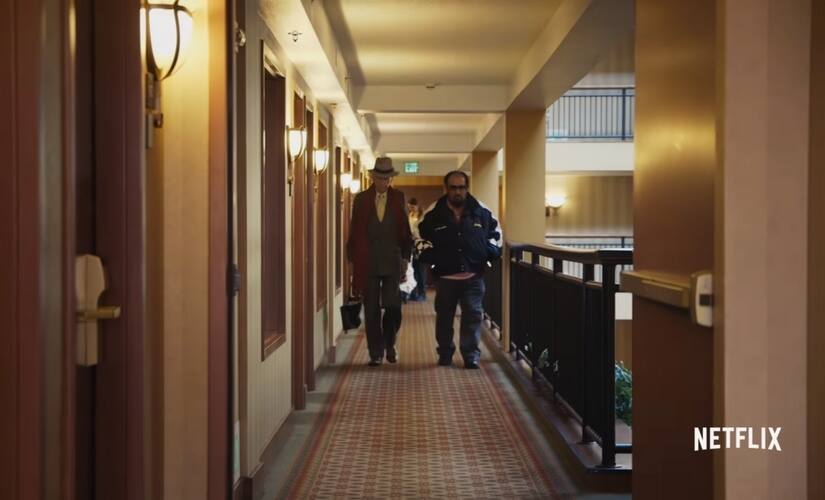American writer Gay Talese has written for Esquire and The New York Times. His most famous essays: Frank Sinatra Has a cold and The Silent Season of a Hero—which dealt with baseball legend Joe Dimaggio—should be required reading for students of literature. Arguably, he’s written The Great American Novel twice: In Honour Thy Father, Talese wrote of mobsters (which remain the endless fascination of all Americans and many cinema lovers). In Thy Neighbour’s Wife, in which Talese explored the 1960s free love culture and ended up staying at a nude resort for “research”. And yet, nothing has captured people like Talese’s article in The New Yorker entitled The Voyeur’s Motel. This Netflix documentary, aptly entitled Voyeur, deals with Talese and the tale he’s been trying to tell for more than 30 years. The story of a man called Gerald Foos, the self-confessed voyeur who bought a hotel with the aim of watching people having sex. Foos first wrote to Talese in 1980: “Dear Mr Talese, since learning of your long awaited study of coast-to-coast sex in America, which will be included in your soon to be published book, “Thy Neighbor’s Wife,” I feel I have important information that I could contribute to its contents or to contents of a future book.” Foos told Talese he’d owned the hotel for a decade, adding: “The reason for purchasing this motel was to satisfy my voyeuristic tendencies and compelling interest in all phases of how people conduct their lives, both socially and sexually. . . . I did this purely out of my unlimited curiosity about people and not as just a deranged voyeur.” The story begins with an introduction to a young Talese. The journalist, who is promoting Thy Neighbour’s Wife on an American talk show, is perceived by the audience as some kind of deviant. Slowly, methodically, he wins them over. The older Talese, reflecting on his life, confesses to having lived through “other people’s experiences”. He seems to own a copy of practically everything he’s ever written. He says that the mistakes most writers, and indeed, most journalists make, is presuming that the story ends when they’re done. He says he enjoys staying in touch with the people in his stories. That you never know when a story picks up again. [caption id=“attachment_4269337” align=“alignnone” width=“825”]  A still from the Netflix’s Voyeur/Image from YouTube.[/caption] And now, after thirty plus years, the man who wrote to him in 1980 is finally ready to step out of the shadows. To be named in print in The New Yorker and then have his story told in a book by Talese. Why? The statute of limitations has expired, Foos explains. Foos, who bought a motel to spy on people, doesn’t see himself as a pervert. He thinks of himself, some would say delusionally, as a historian or a researcher, something akin to Alfred Kinsey. Talese, although he is disturbed, admits to being intrigued. He remembers meeting Foos, and accompanying him onto his “perch” that he built onto his motel. Together, they spy on a man and woman making love. Both men have much in common. They share a fondness for collecting things and observing people. Both live lives of solitude (Foos’ only friend seems to be his second wife) and of quiet desperation. Both have huge egos. If Foos sees himself as some sort of misunderstood scientist, Talese knows that he is living legend. Awaiting the publication of his article, Talese is a tad uneasy. He, better than anyone, knows that a single-source story is always dicey. His reputation is on the line. But he trusts Foos. And after all, he’s seen it with his own eyes. Why would Foos lie? Why would he open himself up to be jailed, or potentially, to be sued? But those damned New Yorker fact checkers are ruthless beasts. They pull on the threads of Foos’ story, until it begins to unravel. Foos can’t remember when he bought the hotel. Was it 1969 or 1965? Does it really matter? This is small fry, according to Foos. They’re missing the big picture. The men share a unique relationship. Some would call it strange, others might term it disturbing. They seem to genuinely like each other, but there’s a wellspring of resentment that runs deep. Foos thinks Talese is an effete elite, floating far above the common folk. Talese seems to regard Foos with the manner of a boy examining a butterfly as he pulls off its wings. He seems, on some level, repelled by Foos and his misguided notion of being viewed as some sort of historical figure. To some extent, Talese sees himself as the star of the show and Foos the bit player. Foos, more than anything, wants to be famous. He wants to be remembered. But then he starts having second thoughts. What if someone hurts him or his wife? What if someone robs him? Sues him? The voyeur is now the one being watched. And he doesn’t like it. Talese thinks Foos is “having second thoughts.” Foos says Talese thinks his life is “all one goddamned game”. He doesn’t approve of the way Talese is presenting him to the world. Tensions between the subject and his biographer grow. And then, after one simple phone call, things begin to fall apart. First Foos’ story and then Talese’s credibility as a journalist. And like the Voyeur, the rest of us simply can’t stop watching. Voyeur is now streaming on Netflix. Watch the trailer here:
Netflix documentary Voyeur deals with Gay Talese and the tale he’s been trying to tell for more than 30 years.
Advertisement
End of Article
Written by Deven Kanal
Deven Kanal kicked off his media career at Reader's Digest after graduating from The Times School of Journalism. With more than 13 years of work experience in the media, he has written on a variety of subjects — from human interest stories to sports, politics and pop culture see more


)
)
)
)
)
)
)
)
)



